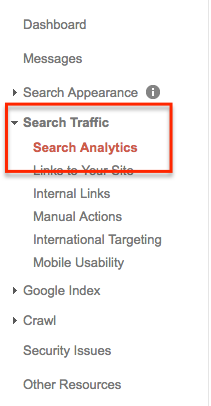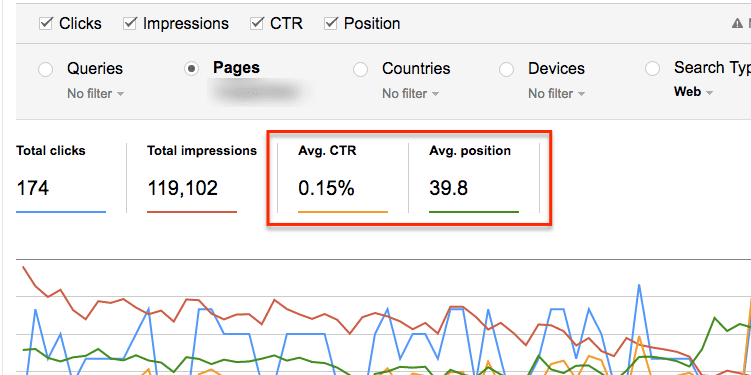Google Search Console is one of the most powerful tools search engine optimizers can use to improve their website’s search engine position. Despite its usefulness and effectiveness, Google Search Console is, unfortunately, highly underrated.
Many SEO experts and business owners set it up and simply forget about it. They rarely log in to the Google Search Console and gather insights that could redefine and improve their SEO strategy. As a matter of fact, Google Search Console (GSC) is one of those tools that you should be checking every week at least.
One of the biggest reasons why people fail to use GSC is because Google Search Console can be overwhelming. It offers so much information that it can feel daunting to someone who isn’t entirely familiar with this SEO tool.
In this blog post, we aim to solve this problem as much as possible.
In this post, we share 4 Google Search Console tips that search engine optimizers (SEOs) can use to improve their site and its position in the SERPs.
1. Exploring the Search Analytics report
The Search Analytics report is a fantastic resource in the Google Search Console and contains tons of valuable information about your website and web pages that appear in the search engine results pages.
To access the Search Analytics report in Google Search Console, log in to your account and click on Search Traffic in the left sidebar menu. The drop-down menu will reveal many subsections. Click on the first one, “Search Analytics.”
Look at the following screenshot.
In simple words, the Search Analytics report in GSC shows you how many times your website appears in the SERPs. That data can be then filtered into several different categories, e.g., by pages, by date range, by device type, by queries, etc.
All these options are visible in the above screenshot.
From total impressions to average click-through rates to average positions, you will find plenty of useful information in here to get started. Search Analytics gives you the much-needed direction you need to improve your site’s SEO.
2. Branded vs. non-branded keywords
Before you jump into more detailed information, it is highly recommended that you evaluate data for branded vs. non-branded keywords. This information gives you valuable insights and often steers the direction of your SEO efforts.
You can filter brand keywords by filtering queries to include only specific brand-based keywords. Use the “contain” query filter.
Apart from adding the main brand name, feel free to include sub-brands, major product names, and common variations that you believe are exclusively associated with your business.
Whatever information you get, take note of the average position and average click-through rate. It’s important to compare these metrics with non-branded keywords.
By evaluating data on branded keywords, you can find answers to several important questions. For example:
- How powerful is your brand keyword?
- How much traffic is your website receiving because of your brand name?
- How do branded-keywords compare against non-branded keywords?
- What is the average search position for brand keywords?
For example, if you have an average of 12 for your main brand keyword, you know you have to work to do. You can start by finding which websites are overtaking you in the SERPs for your brand keywords, evaluating their SEO power, and building a strategy that would help you beat them.
Make sure to compare this data (for branded keywords) with non-branded keywords. You can find many hidden gems there.
For example, if you find out that the average click-through rate (CTR) is better for non-branded keywords, you can drill down and see which particular keywords are responsible for that.
In other words, with this simple technique, you can not only learn the power of your brand keywords, but you can also identify “winner” keywords that are contributing most to your website’s success.
3. Performance of specific web pages
Many times, we create a specific web page with hopes that it would perform magnificently for us. It does not always work, though.
That leaves us with two choices: we can either let it go and start working on some other project or we can go back, identify why it didn’t work and see if it can still be improved.
The second option is always the better one as it not only gives the web page a fair shot of reaching our initial expectations, but it also helps us learn more about our target audience, search-engine factors, and the business/website.
Google Search Console enables you to see performances of individual web pages, which then paves the way for optimizing them.
You can do that by visiting the Search Analytics report. This time, however, instead of filtering data by ‘Queries’, filter it by ‘Pages.’
Perhaps you should start with an individual landing page that you created for a particular marketing campaign.
Start by taking note of the average CTR and average position.
Next, leave the pages filter intact and switch to the query-specific report. It will allow you to see individual keywords and keyword phrases that drove impressions and traffic visitors to this web page.
Evaluate all these keywords and gauge their performance. Explore the possibilities of using these keywords in other campaigns and for other landing pages, blog posts, etc.
Secondly, don’t forget to compare to compare different pages, e.g., comparing optimized pages with those pages that are still a work-in-progress. Similarly, compare web pages, which belong to the same marketing campaign and keyword phrases but across different verticals, e.g., blog posts vs. landing pages.
4. Improve performance with minimum efforts
You can also shortlist all the web pages that have good average positions but lower click-through rates. For example, identify all the web pages — following the techniques mentioned above — with an average position of less than 5 and a click-through rate of less than 2.
These are web pages that are already positioned well but, for some reasons, not getting enough traffic because of lower click-through rates.
Tweaking meta titles and meta descriptions (and including actionable words that encourage clicks) may improve the CTR and, eventually, the traffic to your website.
Similarly, you can also look for pages with a high CTR and average position just below Google’s first page, e.g., an average position of 11, 12, and 13.
With the help of keywords that trigger those web pages in the SERPs, you can optimize those pages for those keywords and push them into Google’s first page. It will dramatically improve the total number of impressions and traffic visitors your web pages get.
Conclusion
Navigating and using SEO tools like the Google Search Console can be overwhelming and daunting at times. However, with the right set of techniques at your disposal — even if they only a few — you can start using the wealth of information that GSC has to provide webmasters.
Start using these four Google Search Console tips and see massive improvements in your SEO strategy and overall website traffic.
